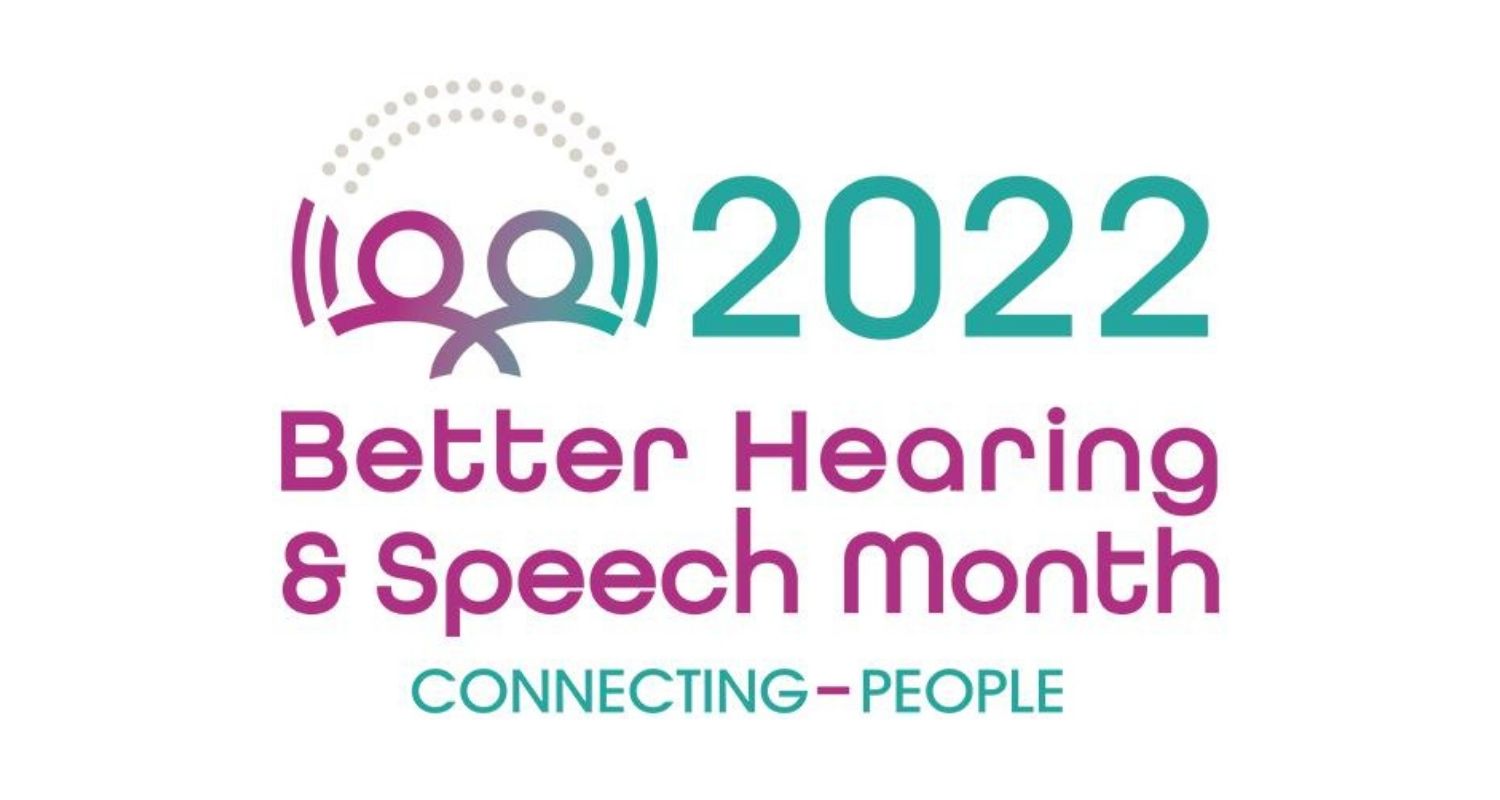
Each May, the American Speech-Language-Hearing Association (ASHA) celebrates Better Hearing and Speech Month (BHSM). BHSM is a time to spread broader awareness about communication disorders of all kinds—including hearing loss—and talk about some of the life-altering treatments that can help make communication easier.
The theme for 2022 is “Connecting People.” What a great reminder of what treating hearing loss is really about! By improving our ability to hear, especially if we’ve started to experience hearing loss later in life, we’re able to maintain our connections to the important people in our lives, as well as make new ones!
Safe Listening for Life!
ASHA stresses that hearing loss prevention is just as important as treating hearing loss. Noise-induced hearing loss (NIHL) has been on the rise. NIHL happens when we are exposed to excessive sound levels for too long, and too often. If sound stays at or below around 70 dBA, it is safe for everyone. When it reaches 75 dBA for kids or 80 dBA for adults, we should be concerned about the duration of our exposure. 8 hours or more of exposure at these levels can potentially induce hearing loss.
As the noise levels climb higher, the safe period of exposure becomes shorter. At around 100 dBA, only about 15 minutes of exposure can cause hearing loss. 100 dBA is the noise level of an average high school dance or a farm tractor. Above 110 dBA, hearing loss can be caused almost immediately. This is the level at an average rock concert, or riding a loud motorcycle.
If you’re unsure of the noise level in a given environment, apps can be downloaded on your smartphone that will measure SPL (sound pressure level). While these are reasonably accurate on the iPhone™, the variance among Android devices’ microphones can make them unreliable. You can also purchase dedicated SPL meter devices for as little as $30.
Here are a few ways to protect your hearing ability that we should all keep in mind as we go about our lives:
- Wear Hearing Protection – For sounds above 80 dBA or so, we should wear earplugs or earmuffs if we will be exposed for any significant amount of time. For sounds above 110 dBA, it’s best to double up with both earplugs and earmuffs. Different hearing protection devices will have different attenuation ratings, as well, so be sure you’re wearing enough hearing protection for any given activity. At the same time, be careful not to overprotect your ears! This can serve to cut us off from our surroundings and create a dangerous situation.
- Keep Your Distance – 500 feet or more is generally a safe distance from loud sound sources, though it also depends on just how loud the sound is.
- Cover Your Ears! – For short bursts of loud sound, like when an ambulance or a loud truck drives by, simply plug your ears with your fingers or cover them with your hands while the sound is present.
- Purchase Quieter Products – Whether it’s a window air conditioner, a vacuum cleaner, or a blow dryer, many products will advertise that they operate at a quieter volume than other products on the market. Some products will also have a “quiet” mode, which can be used most of the time.
- Use Caution With Earbuds and Headphones – Personal listening devices (PLDs) are responsible for a good deal of NIHL. It’s easy to become adjusted to the volume we hear inside our headphones or earbuds, and to turn the volume up to overcome background noise. This is especially dangerous when background noise is already at dangerous levels—like on a long flight. When using PLDs, take breaks from listening every half hour or hour, and keep the volume level at no greater than half.
- Consider Noise-Canceling Headphones or Earbuds – Headphones tend to be safer than earbuds, as their drivers are further from our eardrums, and they tend to sound better. If you’re a frequent listener, it may be worth investing in noise-canceling listening equipment, which actively cancels incoming noise with the use of microphones on the outside of the device. These can work especially well on airplanes, buses, and other transportation where background noise is fairly consistent.
Even when we protect our hearing, we may still develop hearing loss at some point in our lives. However, by protecting ourselves from excessive noise, we will certainly have less hearing loss than we otherwise would. Custom earplugs are an excellent option for those who are exposed to noise on a regular basis through work or recreation.
- UpState Hearing Instruments Summer 2023 Newsletter - June 27, 2023
- Tips to Help Your Hearing Aids Last Longer - March 4, 2023
- Celebrate World Hearing Day: Ear and Hearing Care for All! - February 28, 2023
Request a Callback
That’s why we have a hearing care expert available to help.
If you have a question, or would like to speak to a professional privately about the challenges that you may be facing, then simply request a callback and we’ll call you for a friendly no-obligation conversation.
